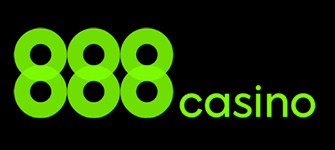Roulette History
Like most of the other popular casino games, roulette’s history is not always as clear-cut as we would hope to believe. The game has been around for quite a while and we have tracked its progress over the centuries. As it happens, roulette has developed much since its inception and here, we will take a look at how that happened exactly.
Early Years of Roulette
The exact origins of the game of roulette remain a mystery to this very day. There have been reports which state that inspirations for roulette could be traced back to ancient civilizations, such as China, the Roman Empire and Ancient Greece. Each of these supposedly had games with a spinning element to them. How they relate to roulette is not exactly clear. Moreover, there have been doubts about the authenticity of these reports. Some claim that they are based in fact, while others believe them to be stories with no substantial backing.
Some historians used to joke that roulette is as old as the wheel itself. We know that is not true; but one thing most experts agree upon is that the game (as seen today) originated in France some 200 years ago, where it has been expanding ever since.
The first mention of the game was in a publication, dating back to 1801. It was a French novella, bearing the name La Roulette ou le Jouer, written by the author Jacques Labelle. He describes a wheel bearing 36 number slots; plus a zero and a double zero pocket which were the house numbers. The novella also goes on to describe the basic roulette layout; pretty much the same kind we are used to playing on now.
The only significant difference between the roulette at the time and the modern iteration of the game was that colour of the zero and double-zero pockets. Originally, the zero pocket was red, while the double-zero was black. As you can imagine, this gave the red/black bet a 0% house edge. Regardless, the colour of both pockets was changed to green at some point.
A casino in Homburg, Germany, was the first recorded gambling establishment (the casino opened doors in 1843) to ever implement the single-zero wheel. French noblemen François and Louis Blanc brought the game over after gambling had become illegal in France. It was an instant hit with players and the game caught on. This was done as a very thought-out marketing scheme, to draw crowds away from European casinos, who at the time were playing on double zero wheels only.
But it wasn’t the Homburg casino that made single-zero roulette wheels the standard, which all other casinos had to follow. The biggest contributor in regards to popularizing the single-zero wheel was none other than the casino in Monte Carlo. After doing some major renovations, the casino owners decided to place only single-zero roulette tables; thus increasing their popularity. And because the casino was so influential, soon the rest of Europe accepted this norm and from there on it became the standard.
Roulette in North America
New Orleans was the first American city to have ‘French style’ roulette wheel decorating casino establishments. This came after a shipment of older French double-zero wheels happened to land on American soil. Before that, roulette wheels in America had 28 number slots, and three house numbers (0, 00, and Eagle). The house had a tremendous edge of 12.9%, which made players dislike the game from the very beginning.
French wheels offered a much better payout (35 to 1 on any straight bet), giving an overall house edge of 5.26%, which is considerably less than the aforementioned 12.9%. Proficient players soon understood the advantage of playing on a 38 pocket wheel; and so the game became a common attraction, that no self-respecting establishment can do without.
Nowadays, the double-zero wheel has become the norm in North American casinos. Even as European establishments switched to the single-zero version, North American ones proved more resistant to change. Now the two variations exist side-by-side and are offered as European Roulette and American Roulette.
Roulette in the Modern Day
In the 21st century, roulette has become a global phenomenon. It is played all over the globe and all respectable establishments feature some form of roulette. The full table version is primarily reserved for the high-end casinos, while lower-tier venues feature only the wheel.
With the rise of online gambling during the 90s and into the 2000s, roulette was one of the first games to be adapted for virtual play. Developers have created countless roulette titles and while most of them follow the traditional rules, as found in American and European Roulette, several variations have come forth that add something extra to the experience.
The iGaming scene is home to a wide range of roulette titles, ranging from the classic to the extravagant. Some of the latter include games that feature jackpots, as in the case of Diamond Roulette or Age of the Gods Roulette, or multiple balls, such as Double Ball Roulette. In the virtual space, roulette games are targeted at all demographics. One can bet as little or as much as they please, with table limits starting at £1.00 and going as high as £10,000 or more in some cases.
The variety that online gambling offered in comparison to its land-based counterpart meant that players could experience much more than ever before. Whereas before, participants only had a limited number of games available to them at any given time, online gambling put dozens of them at their disposal. What’s more, these games were only a click away and one could play without even leaving their home.
As the online casino scene developed, software providers introduced live roulette to the masses. Now, players could place bets online but without having to miss out on the genuine casino experience. Live dealer games come in many varieties and can be found at most online casinos. It is considered by many to be the future of iGaming and with good reason.


 PlayOJO Casino
PlayOJO Casino 888casino
888casino All British Casino
All British Casino Casino Action
Casino Action UK Casino Club
UK Casino Club